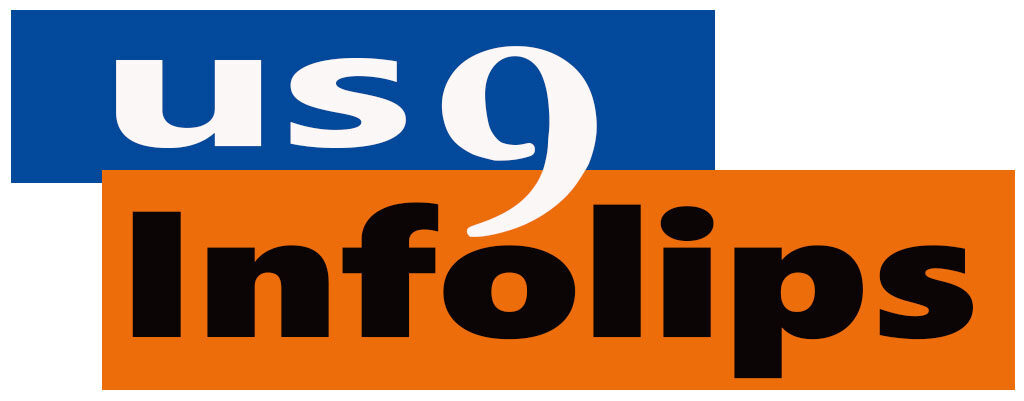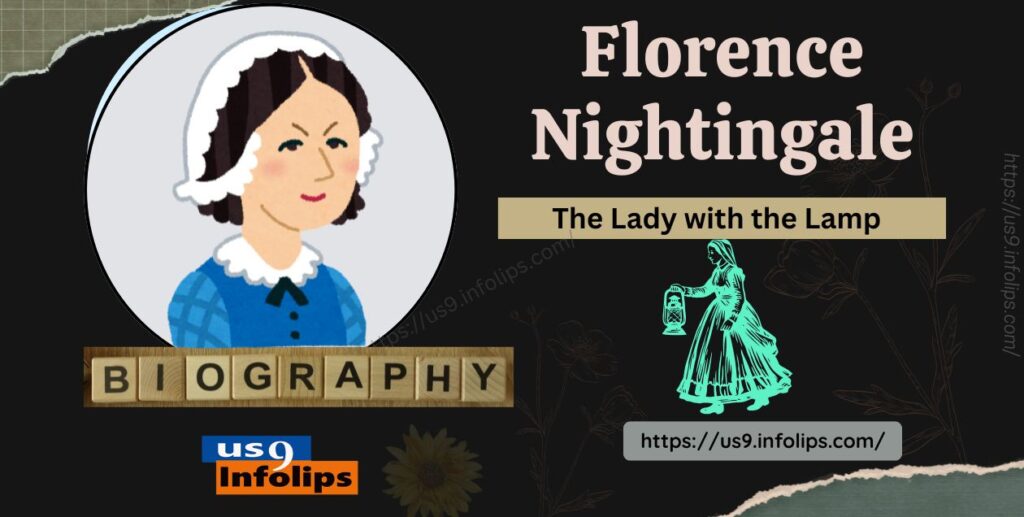Florence Nightingale: A Life Dedicated to Healing and Reform
Florence Nightingale: The Lady with the Lamp Who Changed the World of Nursing
Florence Nightingale’s story is more than just that of a nurse; it’s a tale of determination, intellect, and profound social change. Let’s walk through the life of the woman who transformed healthcare.
Table of Contents
A Privileged Beginning, An Unusual Calling:
Born on May 12, 1820, in Florence, Italy (hence her name!), to wealthy British parents, Florence grew up in England with every advantage. But unlike most women of her class destined for marriage and society, she felt a different purpose stirring within her. As a teenager, she believed she received a divine “calling” to serve others, particularly the sick and poor.
Defying Expectations – The Path to Education:
Florence’s desire to become a nurse horrified her family. In the mid-19th century, nursing wasn’t a respected profession, often associated with lower-class women and poor conditions. Yet, Florence persisted, rejecting marriage proposals and convincing her father to allow her to study.
Learning the Craft:
Against her family’s wishes, she finally got her way. She undertook nursing training in Kaiserwerth, Germany, in the early 1850s, learning foundational skills at a pioneering deaconess institution. She later gained further experience in Paris.
Early Career Steps:
Returning to England in 1853, Florence quickly made a name for herself. She took up a post as superintendent at a hospital for “gentlewomen” in London, already demonstrating her administrative talents and commitment to improving care, tackling issues like sanitation during a cholera outbreak.
The Crimean War – A Call to Action (1854):
When the Crimean War broke out, shocking reports emerged about the horrific conditions facing wounded British soldiers in military hospitals. Sidney Herbert, the Secretary of War and a friend of Nightingale’s, asked her to lead a team of nurses to Scutari (modern-day Üsküdar, Turkey).
The Lady with the Lamp:
Arriving at the Barrack Hospital in Scutari in November 1854, Florence and her 38 nurses faced chaos: filth, overcrowding, lack of supplies, and hostility from some army doctors. Undeterred, she enforced rigorous sanitation, procured essential supplies (sometimes with her own funds or donations), improved nutrition, and organized care.
Her nightly rounds tending to patients earned her the enduring nickname, “The Lady with the Lamp,” a symbol of comfort and dedication.
Data as a Weapon for Change:
Florence wasn’t just a compassionate caregiver; she was a brilliant statistician. During and after the war, she meticulously collected data on mortality rates. She discovered most soldiers weren’t dying from wounds but from preventable diseases like typhus and cholera, linked directly to unsanitary conditions.
Revolutionizing Healthcare Back Home:
Hailed as a hero upon returning to England, Florence used her data and influence to advocate for sweeping reforms. She famously used innovative graphical representations, like the “polar-area diagram” (a type of pie chart), to dramatically illustrate the impact of sanitation on death rates, making complex data understandable to politicians and the public.
Her 830-page report, Notes on Matters Affecting the Health, Efficiency and Hospital Administration of the British Army, was groundbreaking.
Founding Modern Nursing:
In 1860, using funds raised in her honour, she established the Nightingale Training School for Nurses at St Thomas’ Hospital in London. This was the world’s first secular nursing school, based on her principles of rigorous training, hygiene, and professionalism. It fundamentally changed nursing from a menial job to a respected profession for women.
A Legacy Forged in Later Life (Death: 1910):
Though often bedridden from chronic illness contracted in Crimea (“Crimean Fever,” likely brucellosis), Florence continued her work relentlessly for decades. She wrote extensively (“Notes on Nursing” became a standard text), advised on hospital design, campaigned for public health improvements in Britain and India, and advocated for women’s rights.
She became the first woman admitted to the Royal Statistical Society. Florence Nightingale died peacefully in London on August 13, 1910, leaving behind a transformed world of healthcare.
Interesting Facts About Florence Nightingale
- Named After Her Birthplace: She and her older sister, Parthenope, were named after the Italian cities where they were born (Florence and Naples, respectively).
- Fluent in Multiple Languages: Her father provided her with a rigorous classical education, making her fluent in several languages, including French, Italian, German, Latin, and Greek.
- Rejected Marriage: She turned down several marriage proposals, believing marriage would interfere with her calling to nursing.
- Kept a Pet Owl: While travelling in Greece, she rescued a baby owl from boys tormenting it, named her Athena, and often carried the owl in her pocket.
- Pioneer Statistician: She was the first female member of the Royal Statistical Society (elected 1858) and an honorary member of the American Statistical Association (1874).
- Invented the “Coxcomb”: She developed the polar-area diagram, often called a “Nightingale Rose” or “Coxcomb,” to visually represent complex health statistics effectively.
- Suffered Chronic Illness: From age 38, she was often confined to her bed due to a chronic illness believed to be brucellosis, contracted during the Crimean War, yet continued her influential work.
- Received the Order of Merit: In 1907, she became the first woman to receive the prestigious Order of Merit from the British monarch.
- Wrote More Than Just About Nursing: She wrote extensively on hospital reform, sanitation, social issues, women’s rights, and even a novel exploring the frustrations of upper-class women (
Cassandra).
Best Achievements in Her Life
- Transforming Crimean War Hospitals: Drastically reducing mortality rates at Scutari through sanitation, organization, and improved care, changing military healthcare forever.
- Founding the Nightingale Training School (1860): Establishing the first secular nursing school, professionalizing nursing and setting global standards for nursing education.
- Pioneering Use of Statistics in Health: Using data collection and analysis to identify problems (like disease vs. battle wounds being the main killer) and prove the effectiveness of reforms.
- Developing Innovative Data Visualizations: Inventing the polar-area diagram (“Nightingale Rose”) to make statistical evidence compelling and accessible to policymakers and the public.
- Authoring Influential Texts: Writing “Notes on Nursing” (1859), a foundational text that defined nursing principles still relevant today, and numerous reports on hospital administration and health.
- Advocating for Public Health Reform: Campaigning tirelessly for improved sanitation, hospital design, and healthcare standards in Britain and internationally (including significant work related to India).
- Elevating the Nursing Profession: Changing nursing from a disrespected, menial job into a trained, respected profession, particularly opening up career paths for women.
- Inspiring Generations: Becoming an enduring global icon of compassion, dedication, and the power of informed action in healthcare.
- Receiving the Order of Merit (1907): Formal recognition as the first woman to receive this high honour for her exceptional contributions.
Lesser-Known Facts About Florence Nightingale
- Father’s Name Change: Her father, William Shore, changed his surname to Nightingale after inheriting a fortune and estate from a maternal relative, Peter Nightingale.
- Early Analytical Skills: Even as a child, her letters and collections showed a meticulous skill for classifying and analysing information, foreshadowing her later statistical work.
- Wrote a Novel: She penned a novel titled
Cassandra, expressing frustration with the limited roles and intellectual constraints faced by women of her social class. - Initial Resistance in Crimea: She and her nurses faced significant resistance and lack of cooperation from army doctors upon arrival in Scutari, who were skeptical of female nurses.
- Managed Donations: She meticulously managed charitable donations sent for the troops, once famously responding to Queen Victoria’s offer of eau de cologne that “a little gin would be more popular.”
- Sister as ‘Manager’: While Florence was in Crimea and later, her sister Parthenope, despite earlier disagreements, acted somewhat as her manager back home, handling correspondence and circulating news.
- Advised on US Civil War Hospitals: Her expertise was sought internationally; she provided advice on managing field hospitals during the American Civil War.
- Focus on India: She dedicated significant effort later in life to analyzing data and advocating for sanitary reform and improved public health in India, despite never visiting.
- Complex Relationship with Germ Theory: While a staunch advocate for sanitation, her understanding sometimes differed from the developing germ theory; she emphasized environmental cleanliness (“miasmas” or bad air) as paramount, though her practical methods were highly effective against germs regardless.
Controversies Surrounding Florence Nightingale
- Difficult Personality: Contemporaries and historians note she could be demanding, autocratic, and difficult to work with, often clashing with officials and even allies to achieve her goals.
- Initial High Death Rates in Scutari: While she drastically improved conditions, death rates were initially very high before her sanitation reforms fully took effect. Sometimes critics misrepresent this initial phase, although the British government also reportedly manipulated figures early on to paint a rosier picture than reality.
- Relationship with Mary Seacole: The dynamic between Nightingale and Mary Seacole, a Jamaican doctress also working in Crimea, is debated. Some accuse Nightingale of rejecting Seacole’s help due to racial prejudice, while others argue it was due to differing methods or official structures.
- Views on Colonialism and Race: Recent scholarship highlights troubling aspects of her writings, which reflected the prevailing racist and paternalistic attitudes of British colonialism, particularly regarding Indigenous peoples in colonies like New Zealand and Australia. Her belief in the “civilizing mission” of colonialism is now seen as deeply problematic.
- Insistence on Medical Hierarchy: She firmly believed nurses should work under doctors’ orders, albeit with “intelligent obedience.” Some later nursing movements criticized this perceived subordination.
- Overshadowing Others: Her immense fame sometimes overshadowed the contributions of other nurses and reformers working during the same period.
- Initial Skepticism/Different Emphasis Regarding Germ Theory: While her sanitation practices were effective against germs, her theoretical focus remained strongly on miasma (bad air/environment) rather than fully embracing germ theory as it developed, leading to some criticism from a purely scientific standpoint later on.
- Use of Influence: While mostly used for good, her strong connections and forceful personality meant she could sometimes marginalize those who disagreed with her methods or priorities.
- Later Reclusiveness: Her withdrawal from public life due to illness was sometimes interpreted negatively or seen as eccentric, although she remained highly influential through her writing and correspondence.
Best Social Works She Did
- Championing Sanitation: Advocating relentlessly for clean water, ventilation, and waste disposal not just in hospitals but in homes and cities, recognizing environment’s role in health.
- Improving Soldier Welfare: Going beyond immediate medical care in Crimea to ensure soldiers had better food, clean bedding, recreation, and ways to contact family, addressing their holistic needs.
- Professionalizing Nursing: Creating a respectable, trained profession for women, offering them economic independence and a socially valuable role outside the domestic sphere.
- Reforming Workhouse Infirmaries: Using her influence to campaign for better conditions and trained nursing care in the often-dreadful workhouse infirmaries where the poorest received care.
- Advocating for Public Health Data: Pushing for systematic collection and analysis of health statistics by governments to identify problems and guide public health policy effectively.
- Hospital Design Reform: Consulting on and influencing the design of hospitals to promote better ventilation, sanitation, and patient flow, impacting hospital architecture globally.
- Improving Health in India: Conducting extensive research and lobbying for sanitary reforms, irrigation, and famine relief measures to improve the health of the population in British India.
- Promoting Preventative Health: Emphasizing the importance of hygiene, nutrition, and healthy living conditions in preventing disease, laying groundwork for public health education.
- Writing for Public Education: Publishing accessible works like “Notes on Nursing” to educate not just nurses but ordinary people on basic health and hygiene principles for the home.
What Was Before Her, and What Changes She Made?
Before Florence Nightingale:
- Nursing: Largely untrained, often seen as a low-status, menial job for lower-class women or nuns. Care was based more on tradition or religious duty than science. Nurses had little formal training, respect, or autonomy.
- Hospitals: Often filthy, overcrowded, poorly ventilated, and lacking basic sanitation. Cross-infection was rampant. Mortality rates, especially from infections contracted within the hospital, were incredibly high. Military hospitals were particularly notorious.
- Healthcare: Understanding of infection control was minimal. Focus was often solely on treating symptoms, with little emphasis on prevention or the environmental factors contributing to disease. Data collection on patient outcomes was inconsistent or non-existent.
Changes Florence Nightingale Made (Her Impact):
- Professionalized Nursing: Established nursing as a respected, skilled profession requiring rigorous training. Founded the model for modern nursing education emphasizing hygiene, observation, and patient care.
- Sanitation Revolution: Proved the link between sanitation and mortality, forcing hospitals (military and civilian) to adopt hygiene standards (handwashing, clean wards, ventilation, waste disposal).
- Data-Driven Healthcare: Pioneered the use of statistics to analyze patient outcomes, identify causes of death, and measure the effectiveness of interventions, making healthcare more evidence-based.
- Improved Hospital Design: Influenced hospital architecture to promote healing environments focused on cleanliness, light, and ventilation.
- Holistic Patient Care: Emphasized caring for the whole patient, including their psychological needs, nutrition, and environment.
- Elevated Public Health Awareness: Used her fame and data to advocate for broader public health reforms, impacting sanitation and health policies beyond hospital walls.
In essence, she transformed nursing from a neglected task into a vital profession and fundamentally shifted healthcare towards principles of sanitation, evidence-based practice, and professional standards that we recognize today.
Conclusion
Florence Nightingale was far more than just “The Lady with the Lamp.” She was a force of nature – a brilliant statistician, a tireless reformer, a pioneering educator, and a compassionate caregiver who fundamentally reshaped the landscape of nursing and healthcare.
Florence Nightingale wasn’t just a nurse—she was a reformer, statistician, and humanitarian. With her lamp in hand, she lit the path for millions. Her vision transformed how we care for the sick and helped shape the future of healthcare. Her legacy continues to inspire generations of nurses, doctors, and caregivers around the world.
FAQ’s
- Who was Florence Nightingale?
- She was a pioneering British nurse, statistician, and social reformer, widely regarded as the founder of modern nursing. (Born 1820, Died 1910).
- What is she most famous for?
- Her work during the Crimean War, improving conditions and reducing death rates in military hospitals, and establishing the first professional nursing school.
- Why is she called “The Lady with the Lamp”?
- During the Crimean War, she made nightly rounds tending to wounded soldiers, carrying a lamp, which became a symbol of her dedication and compassion.
- What was her single biggest achievement?
- Arguably, founding the Nightingale Training School for Nurses in 1860, which professionalized nursing and set global standards.
- Was she just a nurse?
- No, she was also a highly skilled statistician who used data analysis and visualization to drive healthcare reform, as well as a writer and social campaigner.
- Did Florence Nightingale invent the pie chart?
- She didn’t invent the pie chart itself, but she popularized and innovatively used a similar circular chart, the polar-area diagram (or “Nightingale Rose”), to display health statistics effectively.
- Did she ever marry or have children?
- No, she chose not to marry, believing it would interfere with her calling and work.
- How did she die?
- She died peacefully in her sleep at her home in London in 1910 at the age of 90, likely from complications related to the chronic illness (brucellosis) she contracted in Crimea.
- Why is she still important today?
- Her principles of sanitation, evidence-based practice, professional nursing education, and patient advocacy remain fundamental to modern healthcare systems worldwide. International Nurses Day is celebrated on her birthday (May 12th).
Disclaimer : This article is for informational purposes only. Conservation efforts may vary by region. For accurate guidelines, refer to official websites.
Follow us for more captivating articles and stay connected to explore the world. Let’s embrace the power of communication and understanding.

Related topics:
1. Perfect World Travel Guide
2. 9 Most Popular EV Cars in the USA
3. 9 Best Things About Apple TV 4K – Third Generation
4. Think before You Renew Amazon Prime
5. Jimmy Carter: A Great Legacy
6. Memorial Day: Honoring the Sacrifice, Celebrating Freedom
School Site :
For English grammar and lot more : Smart School Infolips
Marathi Poems: Marathi Rang
Technology : Tech Site












Very good information, thanks a lot to share with us!
Thanks for visit, stay with us and show your support. Thank you!
Easy to navigate a great information, you make my day!
Thank you very much. So kind of you!